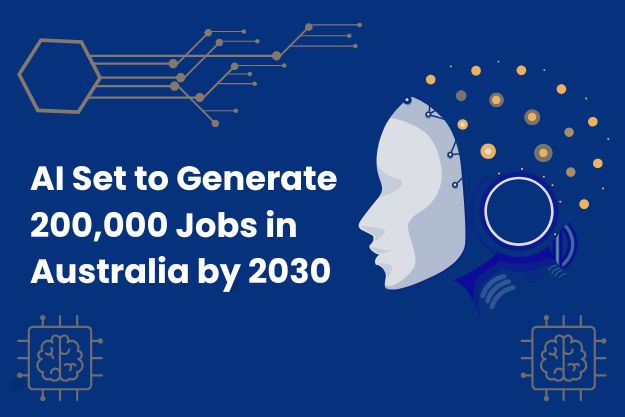- June 14, 2025
- Posted by: admin
- Category: AI Jobs, Industry News, IT Recruitment

A landmark report by the Tech Council of Australia (TCA)—supported by Microsoft, LinkedIn, and Workday—forecasts that up to 200,000 new AI‑related jobs will be created across Australia by 2030 .This striking projection marks a profound shift in Australia’s labour market and economic outlook.
Why the Surge in AI Jobs?
– Rapid Adoption: AI hiring has more than tripled since 2015, with over 1,500 organisations recruiting AI‑skilled talent in 2024 alone
– Cross‑sector Reach: Though dominated by tech roles, growth is unfolding in non‑technical fields—marketing, HR, governance, finance, and customer support roles infused with AI responsibilities are also on the rise
– Economic Benefits: Generative AI alone is expected to contribute around AUD 115 billion by 2030, primarily through productivity gains
Skills Gap: Biggest Barrier to Growth
- To meet the 200,000‑job target, Australia’s AI workforce must expand by 500 percent over seven years
- However, AI training participation remains low: only 24 percent of Australians have had any AI education, much lower than the global average of 39 percent
- Australia is also lagging in converting AI research into commercial successes—only about 0.18 percent of global AI patents originate from Australia.
Strategies to Unlock the Opportunity
The TCA and allied institutions propose comprehensive actions to bridge this skills divide:
1. Expand training pathways:
-
- Scale VET programs, micro‑credentials, short courses, and digital apprenticeships.
- Enable mid‑career retraining to help professionals pivot into AI roles.
2. Promote AI literacy broadly:
-
- Integrate AI education into workplace training—even for non‑tech roles—to raise awareness across the workforce
3. Reform migration systems:
-
- Streamline visa processes and eliminate occupation lists to attract global AI talent quickly and flexibly.
4. Launch strategic capability plans:
-
- The proposed AI Investment and Capability Plan aims to unify skills, infrastructure, governance, and research efforts nationwide.
Emerging Roles: Beyond Engineers
The AI job ecosystem is not limited to coders:
– Core tech jobs: AI developers, machine learning engineers, data scientists.
– AI‑adjacent jobs: AI product managers, policy and compliance officers, HR professionals trained in AI governance.
– New leadership roles: Chief AI Officers, digital transformation leads, AI ethics advisors.
Upskilling is the Name of the Game
To close the skills gap:
– Employers are partnering with educational institutions (e.g. Microsoft’s AI Academy, TAFE collaborations) to deliver shorter, targeted AI courses.
– Recent academic research supports the value of combining degrees with industry certifications—for instance, an AI major plus AI‑900 certification significantly boosts employability.
Employees today also feel pressure: globally, 44 percent would reject jobs without AI upskilling opportunities, and 41 percent would resign if their employer didn’t invest in AI learning.
Risks and Considerations
Not everything is rosy. Some experts caution:
– Job displacement concerns: Even as new roles emerge, many existing middle‑class jobs—from administration and data entry to customer service—are at risk unless workers are reskilled.
– Regulatory gaps: Australia lacks dedicated AI laws yet; only voluntary safety standards and existing laws (e.g. Privacy Act) currently apply. Regulatory clarity is crucial for trust and governance.
Australia has a unique opportunity: AI could power a net gain of 200,000 jobs by 2030, lifting productivity, wages, and innovation. But success hinges on rapid action:
– Government and business must invest in skills reform.
– Educational institutions need to deliver industry‑aligned training.
– Employers and policymakers must raise awareness, build trust, and provide clear governance frameworks.
With the right focus and collaboration, the AI job surge can transform Australia into a smarter, more competitive economy and empower Australians with the skills to thrive.


